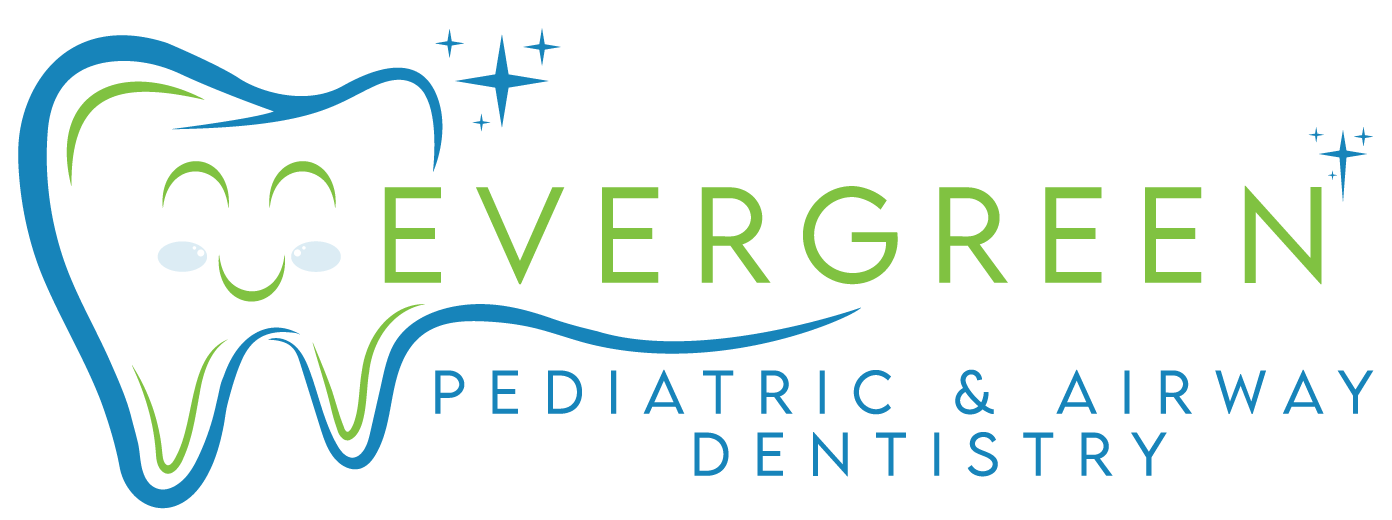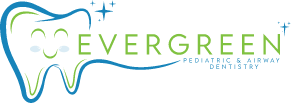Dental Emergencies in Kids: What to Do and When to Call Our Kirkland Office
When your child experiences a dental emergency, it can be overwhelming for both you and your little one. Quick action and informed decisions can make a big difference, not just in relieving immediate pain, but also in protecting their long-term dental health. At Evergreen Pediatric & Airway Dentistry, we specialize in handling dental emergencies with care, compassion, and expertise. Our goal is to help you feel prepared for these situations and to ensure your child receives the best possible care.
This comprehensive guide will equip you with the knowledge and confidence to manage dental emergencies effectively. We’ll cover the most common types of dental emergencies in kids, immediate first-aid steps, and signs that indicate professional care is urgently needed. Together, we can make sure your child’s smile stays healthy and bright.
Understanding Dental Emergencies in Children
What Is a Dental Emergency?
Dental emergencies in kids can range from minor injuries to serious issues requiring immediate attention. These situations often involve pain, swelling, bleeding, or trauma to the teeth, gums, or mouth. Examples include a knocked-out tooth, severe toothache, or oral infections.
How Common Are Dental Emergencies?
Dental emergencies are more common than you might think. According to the American Academy of Pediatric Dentistry, oral injuries are among the most frequent types of childhood injuries. Sports-related accidents, bike falls, and rough play often lead to dental trauma. Studies reveal that up to one-third of children experience dental injuries, with boys slightly more prone than girls.
Why Quick Action Matters
A fast response can prevent further damage and save your child’s teeth. For example, re-implanting a knocked-out tooth within 30 minutes significantly increases the chances of it reattaching successfully. Acting decisively not only minimizes immediate stress but also helps maintain your child’s long-term dental health.
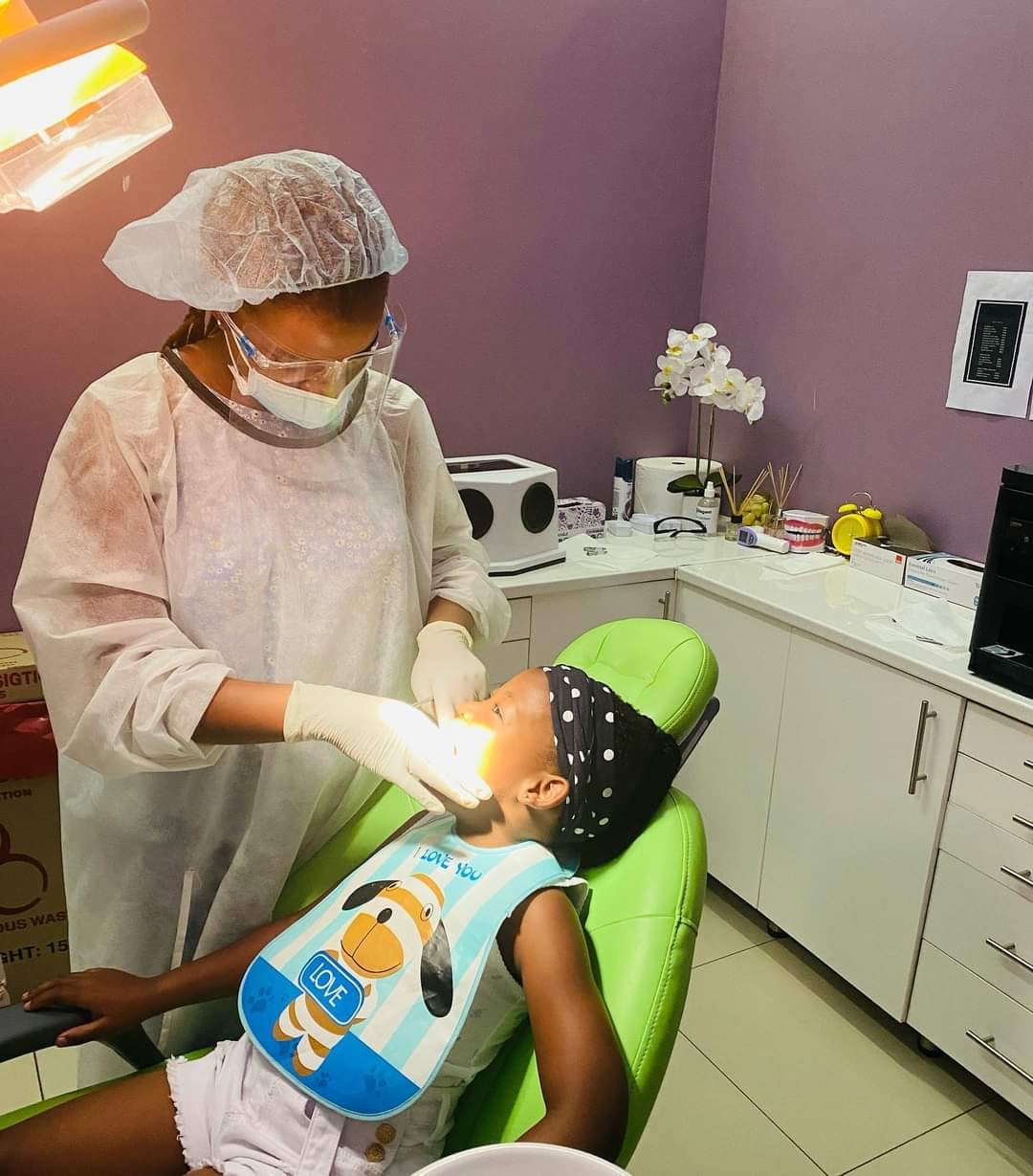
Dental Emergencies in Kids
Common Types of Dental Emergencies
Kids are curious, active, and bound to experience a few bumps along the road of childhood. Here are some of the most common dental emergencies we see and what to watch out for.
Toothaches
Tooth pain can be alarming, especially if your child is suddenly complaining about discomfort. Toothaches can arise from something as simple as trapped food between teeth, or more serious issues like cavities, infections, or injuries.
Signs to Look For:
- Persistent pain
- Difficulty eating
- Swelling around the gum or jaw
When to Worry: If brushing and flossing the area doesn’t relieve the pain or if swelling and fever accompany the discomfort, it’s time to call us.
Chipped or Fractured Teeth
Active play can sometimes lead to chipped or fractured teeth, especially during sports or after a fall. While minor chips might not cause pain, larger fractures can expose nerves, making the tooth sensitive or painful.
Immediate Steps: Save any tooth fragments, rinse your child’s mouth with warm water, and apply a cold compress to reduce swelling.
Knocked-Out Teeth
A knocked-out tooth is one of the most urgent dental emergencies, and time is critical. For baby teeth, don’t try to reinsert them, as this can damage the developing permanent tooth. For permanent teeth, quick re-implantation can sometimes save the tooth.
What to Do:
- Hold the tooth by the crown (never the root).
- Rinse it gently with milk or saline if dirty, but don’t scrub it.
- Place the tooth in milk or an emergency tooth preservation kit and call us immediately.
Loose Teeth
For kids losing baby teeth naturally, wiggly teeth are no cause for concern. However, if permanent teeth are loose due to trauma or injury, this is a serious issue.
When to Call: If the tooth doesn’t stabilize on its own or your child experiences pain, professional intervention is needed to save the tooth.
Abscesses and Oral Infections
An abscess is a swollen, pus-filled area caused by infection, often leading to severe pain, redness, and even fever. Left untreated, infections can spread to other parts of the body.
Red Flags:
- Swollen gums near the tooth
- Severe pain or sensitivity
- Fever or lethargy
If you notice these symptoms, contact our office right away.
Immediate First Aid Steps for Common Emergencies
Knowing what to do in the moments following a dental emergency can make a big difference for your child’s outcome. Here’s a handy guide to keep in mind:
Toothaches
- Have your child rinse their mouth with warm water to clear out food particles.
- Use dental floss to gently remove anything stuck between teeth.
- Apply a cold compress to the cheek to reduce swelling.
Avoid aspirin directly on the gums, as this can cause irritation.
Chipped or Broken Teeth
- Save any pieces of the tooth, if possible.
- Rinse your child’s mouth with warm water.
- Use a cold compress for swelling, and offer over-the-counter pain relief if necessary.
- Schedule a visit with us promptly to assess the extent of the damage.
Knocked-Out Teeth
- Handle the tooth carefully by the crown.
- Place it in milk or an emergency preservation solution.
- If the tooth is a permanent one, it might be re-implanted at our office. Time is key, so call us immediately.
Abscesses and Oral Swelling
- Rinse the mouth with a mild saltwater solution to help reduce bacteria.
- Offer appropriate over-the-counter pain relief for discomfort.
- Seek urgent dental assistance to manage the infection properly.
Signs Your Child Needs Immediate Professional Care
Knowing when to call for help can spare your child from unnecessary discomfort or complications. Here are the red flags you shouldn’t ignore:
- Persistent pain that doesn’t get better, even after using pain relief, could signal a deeper issue like an infection or tooth damage that needs attention.
- Visible swelling in the face, gums, or lips may indicate an abscess or another dental infection, which could spread if left untreated.
- Bleeding that lasts more than 10 minutes, even when pressure is applied, could point to a significant injury or underlying condition.
- Signs of infection, such as fever, pus, bad breath, or difficulty swallowing, often suggest a dental abscess or other serious infection that requires immediate care.
- Dental emergencies involving trauma from a fall, accident, or sports injury, like a knocked-out or chipped tooth, always need urgent evaluation to prevent further damage.
When in doubt, prioritize safety. It’s always better to have a dental professional evaluate the situation.
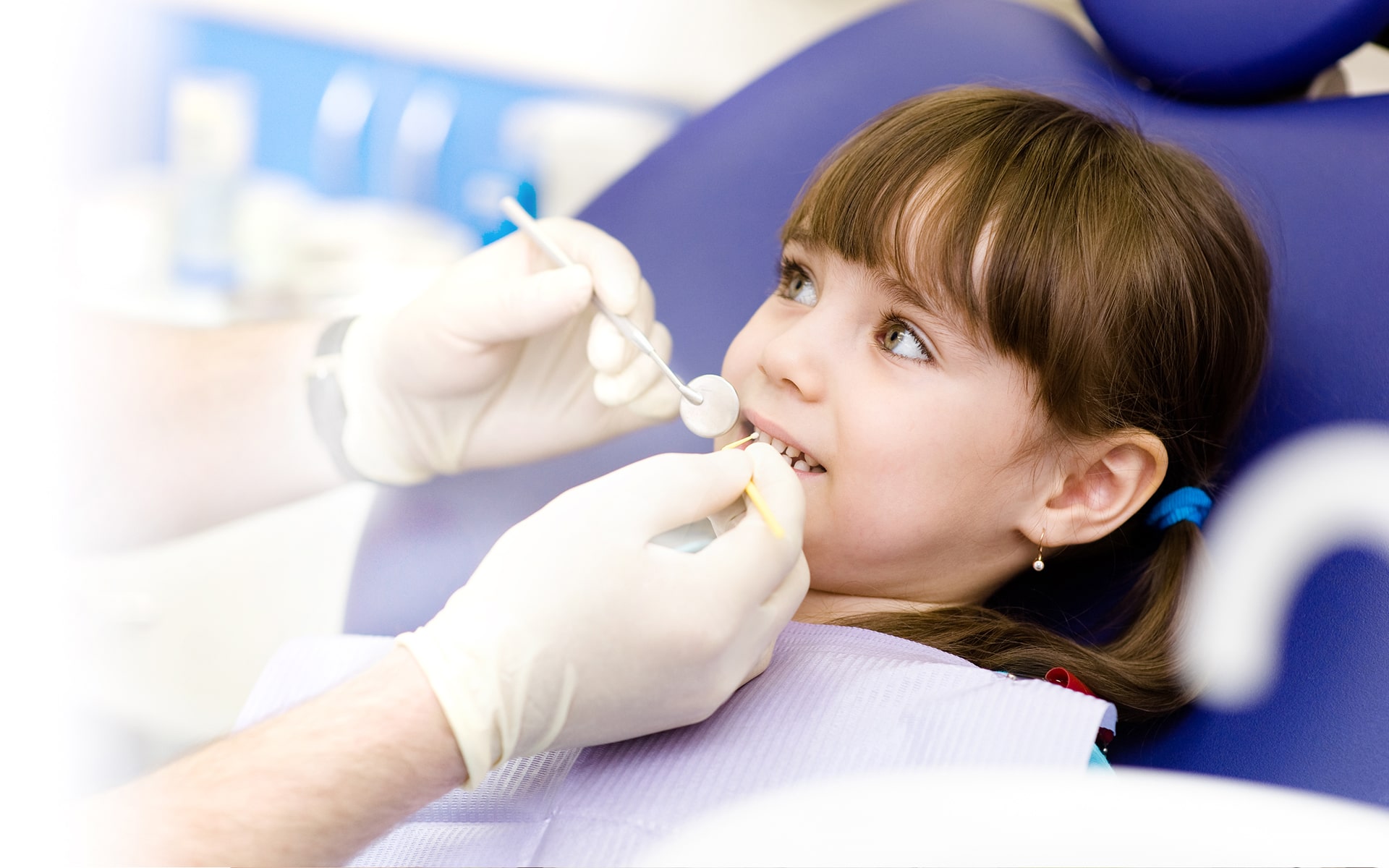
Kids Dental Emergency Treatment
The Role of Pediatric Emergency Dentists
Handling kid’s dental emergencies requires not just technical expertise but also the ability to work with children in distress. Pediatric dentists are uniquely trained to address the needs of young patients, offering both clinical precision and emotional support to ensure effective treatment in challenging situations.
At Evergreen Pediatric & Airway Dentistry, we understand the importance of creating a calm and welcoming environment. Our team utilizes soothing techniques and kid-friendly communication to help alleviate anxiety, ensuring children feel safe and cared for throughout their visit.
Equipped with state-of-the-art, child-focused tools, we strive to make dental emergencies less intimidating. Every aspect of our care is tailored to prioritize comfort while addressing urgent concerns promptly, reflecting our commitment to the well-being of every child we treat.
When to Call Our Kirkland Office
You might wonder whether you should schedule an appointment or head to the emergency room. Here’s a helpful guideline:
When to Call Us:
- Toothaches, chipped teeth, or loose permanent teeth.
- Minor cuts inside the mouth.
- Swollen gums or abscess symptoms.
When to Visit the ER:
- Severe bleeding that won’t stop.
- A jaw injury with visible misalignment or difficulty moving the mouth.
- Trauma involving head injuries.
Keeping our contact information on hand ensures you can reach us quickly during an emergency. At Evergreen Pediatric & Airway Dentistry, we’re here to help whenever you need us.
Preventing Dental Emergencies: Proactive Measures
While accidents aren’t always avoidable, you can take steps to reduce the risk:
Wear Mouthguards
Custom-fitted mouthguards are essential for protecting your child’s teeth during contact sports or other high-impact activities. These guards cushion blows to the face and reduce the risk of broken teeth, jaw injuries, or cuts to the inside of the mouth. Encourage your child to wear a mouthguard every time they play.
Promote Healthy Eating Habits
A balanced diet plays a crucial role in maintaining oral health. Limit your child’s consumption of hard or sticky foods, such as jawbreakers, caramel, or chewy candies, as these can damage teeth or dental work. Instead, encourage healthier options like fruits, vegetables, and dairy products to build strong teeth.
Don’t Use Teeth as Tools
Using teeth to open packages, cut tape, or perform other non-eating tasks can lead to chips, cracks, or other preventable damage. Teach your child the importance of treating their teeth with care and using appropriate tools for tasks. This simple habit can significantly reduce avoidable dental accidents.
Schedule Regular Check-Ups
Routine dental visits are vital to addressing oral health issues before they turn into emergencies. Professional dental cleanings and in-depth evaluations help ensure your child’s teeth and gums stay healthy. Regular check-ups also allow for early detection of potential problems, making treatment simpler and more effective.
Coping with Your Child’s Anxiety During Emergencies
Dental emergencies can be scary for kids, so it’s important to stay calm and provide reassurance. Here are some strategies to help ease their fear:
Stay Positive
Avoid using language that might scare your child, such as “pain” or “shots.” Instead, use comforting words and focus on positive outcomes. Reassure them that the dentist is there to help and make them feel better. Staying optimistic can reduce fear and help your child feel more secure.
Distract Them
Play calming music or engage your child in a conversation about their favorite activities, shows, or toys. This helps divert their focus from the dental procedure. Distractions serve as a helpful tool for reducing anxiety and ensuring your child remains relaxed during their emergency dental visit.
Prepare for Future Visits
Familiarizing your child with the dentist and dental environment is key to reducing anxiety over time. At Evergreen Pediatric & Airway Dentistry, we use kid-friendly dental treatment designed to provide a welcoming experience. Establishing trust early can make future appointments more comfortable and stress-free for your child.
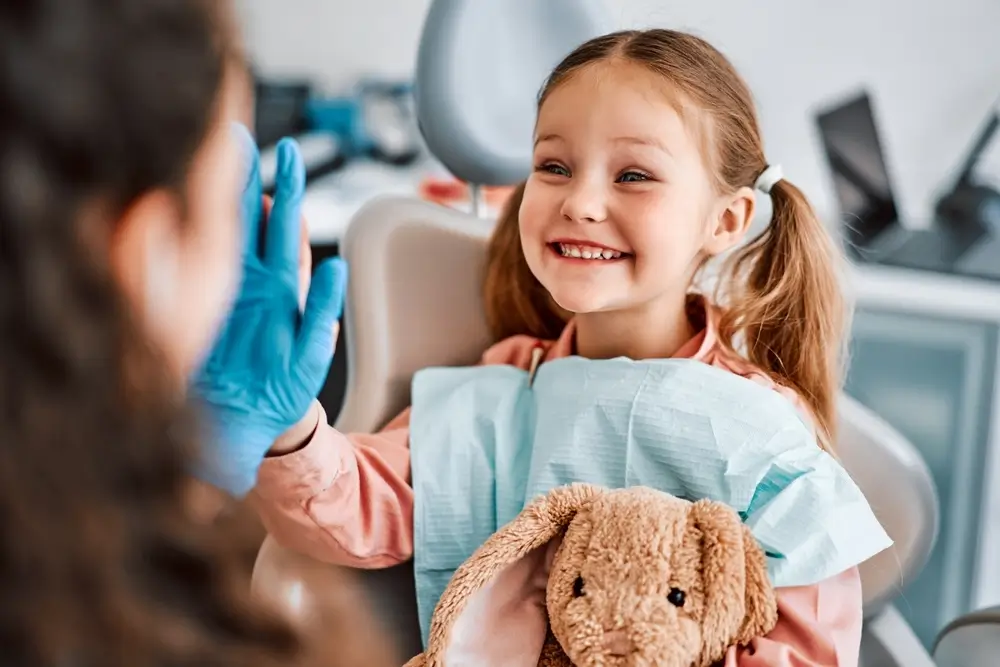
Kids Dental Treatment
Aftercare Following a Dental Emergency
Once the immediate crisis is resolved, aftercare is key to recovery. Here’s how to ensure your child heals properly:
Manage Pain
Use over-the-counter pain relievers, such as ibuprofen or acetaminophen, as directed by your dentist or the medication label. These can help alleviate discomfort and reduce inflammation. Always double-check the dosage for your child’s age and weight to ensure safe and effective pain management.
Adjust Diet Temporarily
Provide your child with soft, easy-to-eat foods while they recover. Options like yogurt, mashed potatoes, applesauce, or scrambled eggs are gentle on the teeth and gums. Avoid hard, crunchy, or sticky foods that could irritate the affected area or disrupt the healing process.
Monitor for Complications
Keep an eye out for warning signs of infection, such as increased swelling, fever, or persistent, worsening pain. If any of these symptoms arise, contact your dentist promptly for guidance. Early detection and treatment of complications can prevent further discomfort or more serious issues.
Empowering Parents to Act Swiftly
Being prepared can turn a stressful dental emergency into a manageable situation. Keep this guide handy, familiarize yourself with first aid steps, and don’t hesitate to reach out to us when you’re unsure.
We encourage parents to schedule routine dental check-ups, which are vital to preventing emergencies and maintaining healthy smiles. And remember, Evergreen Pediatric & Airway Dentistry is your trusted partner for all things related to your child’s dental health. Keep our contact information on hand—we’re always just a call away to provide the care your child needs.
Together, we can ensure a lifetime of healthy, happy smiles for your family!
Evergreen Pediatric & Airway Dentistry
Dr. Susan Kim
12910 Totem Lake Blvd NE #103
Kirkland, WA 98034
(425) 814-3196
Get Directions on Google Maps
evergreenkidsdentist.com

